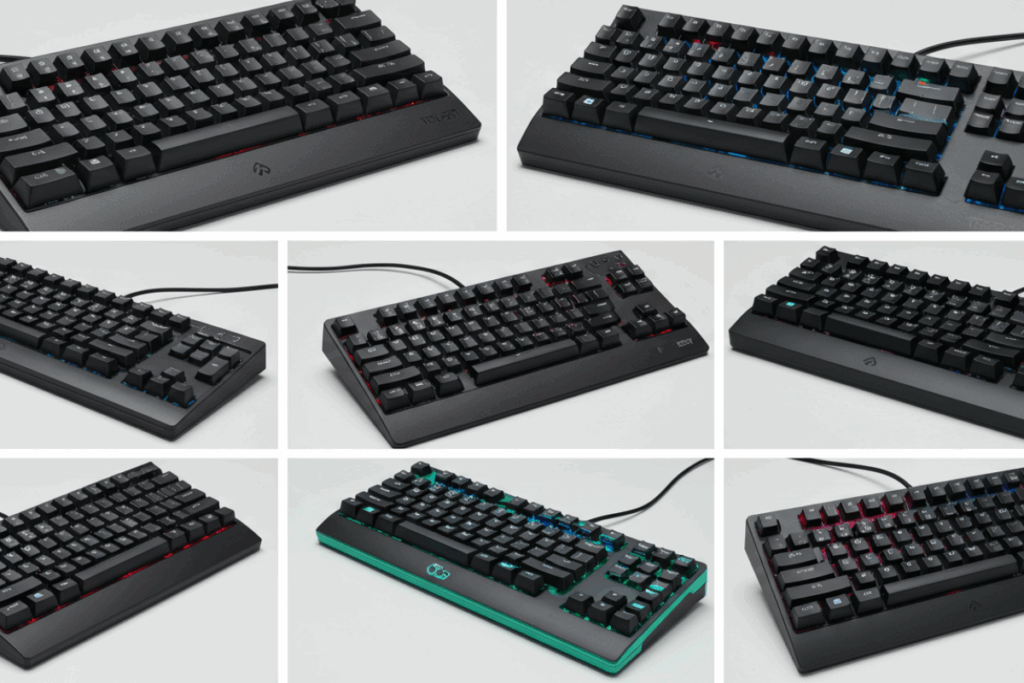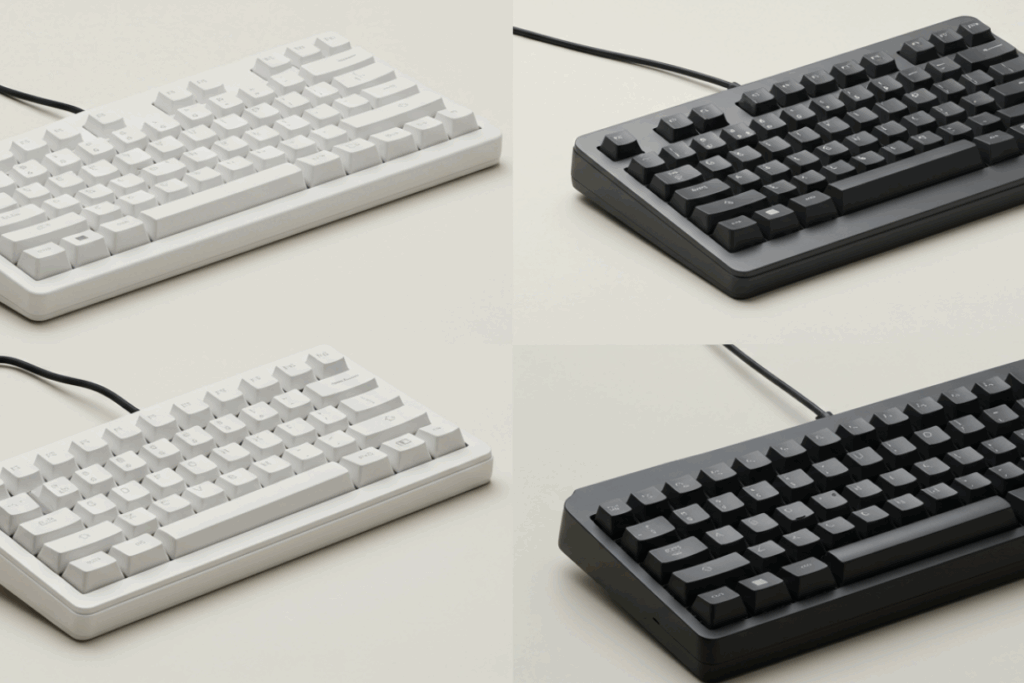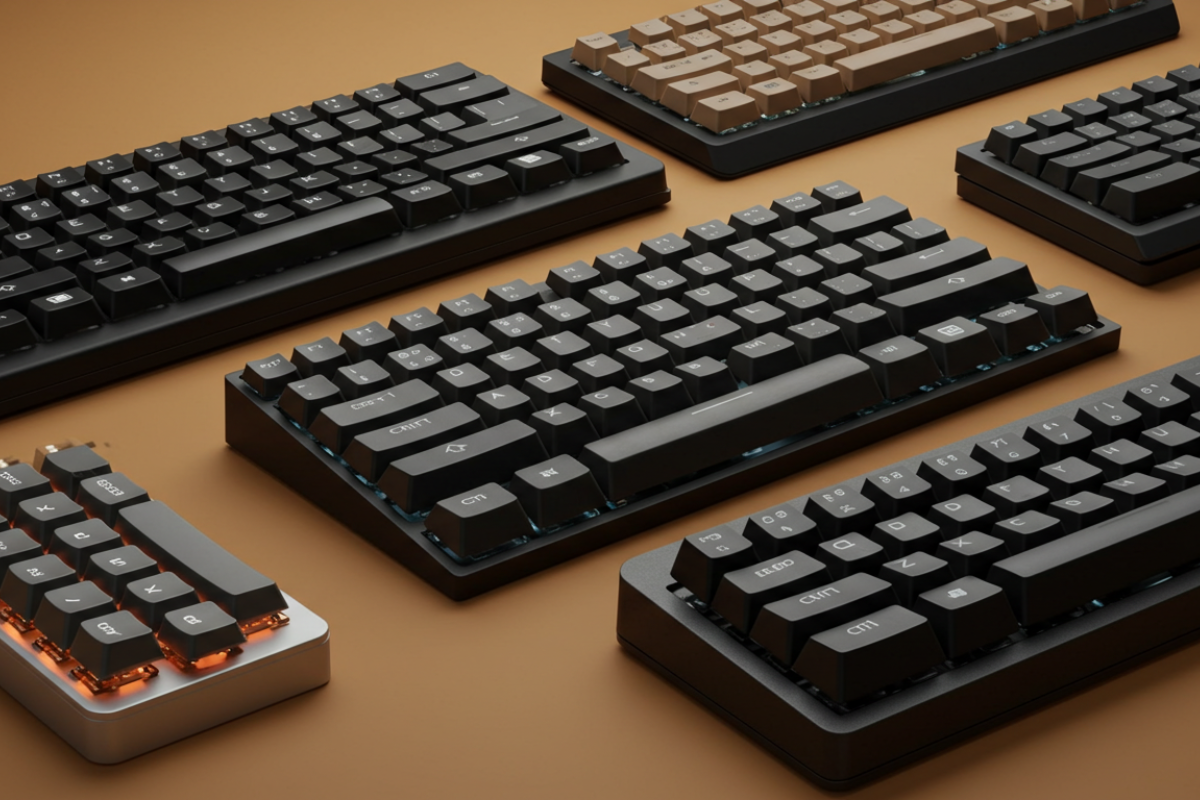Minimalist keyboards 2025 — tested and curated for Keyboards Technology. I tried layouts from ultra‑compact to tenkeyless, judging build, switches, hot‑swap, connectivity, battery life, firmware, and portability.
Below are my top picks, a quick checklist, at‑a‑glance specs, and simple buying advice from Keyboards Technology.
Key takeaway
- I prefer low‑profile 60% and 65% boards for a sleek, small setup.
- Gasket‑mount, hot‑swap models win for quiet, tunable typing.
- Wireless low‑latency options are best for travel and casual gaming.
- I value sustainable materials and solid build for longer life.
- Follow quick guides to match layout and switches to your work.
How I picked the top minimalist keyboards 2025 for Keyboards Technology
How I tested layout sizes: 40% to tenkeyless
I typed the same passages for 10 minutes on each board, played games, and wrote code to judge comfort, speed, and real‑world use.
| Layout | Size | Good for | Trade‑off |
|---|---|---|---|
| 40% | Very small | Portability, simple typing | Missing keys, steeper learning curve |
| 60% | Compact | Great for casual typing and travel | No arrow cluster or function row |
| 65% / 67% | Small-ish | Balanced for typing arrows | Slightly larger than 60% |
| 75% / 80% | Compact full row | Near‑full layout, space saving | Less portable than smaller boards |
| Tenkeyless (TKL) | Full width minus numpad | Productivity, gaming | Larger, less travel‑friendly |
I selected minimalist keyboards 2025 that felt right under my fingers—because specs mean little without the feel.
How I judged build, switches, hot‑swap, and connectivity
I pressed keys thousands of times, checked wobble and case sound, swapped switches where possible, and tested wired and wireless modes for latency.
| Criterion | Test | What I looked for |
|---|---|---|
| Build | Hand pressure, bend test, tap sounds | Solid case, low flex, clean acoustics |
| Switches | Typing loops, sound recordings | Tactile feel, smooth travel, consistency |
| Hot‑swap | Swap 3 switch types in minutes | Easy swap, stable pins |
| Connectivity | Wired, Bluetooth, 2.4 GHz | Low lag, stable reconnection, multi‑host |
I gave bonus points to models with tight tolerances and quiet case sound. Durability and consistent feel over months matter most.
Quick selection checklist for buyers
Use this as a shopping map:
- Layout: Pick the size you’ll use daily.
- Switch type: Try tactile, linear, and clicky.
- Hot‑swap: Essential if you want future upgrades.
- Build quality: Solid case, tight plate fit.
- Connectivity: Wired for lowest lag; multi‑mode for flexibility.
- Keycaps: Prefer PBT for wear resistance.
- Sound: Listen to typing samples if you care.
- Brand support: Check firmware and spare parts availability.
Must‑haves:
- Durable connection — so you don’t lose work mid‑session.
- Replaceable switches/caps — upgrades and repairs stay cheap.
- Clear layout labeling — less time learning, more time typing.
My top minimalist keyboards 2025 — picks and who they suit
Best overall and best value
- Keychron Q1 — Best overall. Solid aluminum shell, gasket feel, and hot‑swap sockets. A small desk workhorse.
- Keychron K2 — Best value. Bluetooth, 75% layout, and good build at a low price — great for travel and light typing.
Models I named best minimalist mechanical keyboards 2025
- Keychron Q1 — Best overall. Great build and sound out of the box.
- Keychron K2 — Best value. Wireless and compact for the price.
- Akko 3068 — Best compact. Small footprint, solid typing feel.
At‑a‑glance specs
| Model | Layout | Mount | Hot‑swap | Connectivity | Case | Price | Best for |
|---|---|---|---|---|---|---|---|
| Keychron Q1 | 75% | Gasket | Yes | Wired (USB‑C) | Aluminum | $120–$170 | Desktop builds, heavy typists |
| Keychron K2 | 75% | Plate | Optional | Bluetooth / Wired | Plastic / Aluminum | $70–$100 | Travel, budget buyers |
| Akko 3068 | 65% | Plate | Optional | Bluetooth / Wired | Plastic | $60–$120 | Small desks, minimalist setups |
I chose these for clean looks, simple layouts, and reliable daily feel.
Compact minimalist keyboards 2025 — travel and small desks
Picks for portability and travel cases
I favor compact boards that save space, charge fast, and type well. I pair them with snug protective cases.
| Pick | Why | Best for | Travel case |
|---|---|---|---|
| 60% | Small, fast to pack | Plane trays, cafes | Slim padded sleeve |
| 75% (slim) | Adds arrows without bulk | Small home desks | Hard shell case |
| Foldable / split | Folds or separates for tight bags | Backpack commuters | Soft roll‑up pouch with cable slot |
I prefer detachable cables, solid Bluetooth, and low‑profile keycaps. Carry an extra cable and a small keycap puller.
How I measured battery life and wireless reliability
Repeatable tests I run:
- Full charge, normal daily use to measure runtime.
- Bluetooth distance checks in 5–10 ft steps to spot lag/drops.
- Standby test: idle in bag 12–24 hours and recheck battery.
- Multi‑device pairing: switch between laptop and tablet for reliability.
| Test | What I did | Looked for |
|---|---|---|
| Active typing | Hours of set tasks | Real runtime |
| Distance check | Walked away stepwise | Signal drops/lag |
| Sleep/standby | Left idle 12–24h | Charge lost |
| Multi‑device | Switched devices | Reconnect speed |
Repeat tests on different days to filter flukes. Battery and wireless matter more than flashy specs.
Packing & care tips for travel
- Use a padded case.
- Pack the detachable cable separately.
- Cover keys with a thin cloth to prevent wear.
- Keep moisture away (silica gel).
- Clean with a soft brush and compressed air.
- Carry spare keycaps and a small USB adapter.
Do: store in a padded sleeve, remove crumbs with a brush, keep a spare cable handy. Don’t toss loose in a bag or shake the keyboard.

Low‑profile and ergonomic minimalist keyboards 2025
Why I favor low‑profile minimalist keyboards 2025 for comfort
Low profile keys sit closer to the desk and keep hands more level, reducing wrist bend and fatigue. Fewer keys mean fewer stretches and a cleaner workflow.
| Feature | Benefit |
|---|---|
| Low key travel | Less finger lift, reduced fatigue |
| Slim case | Keeps wrists flat, better posture |
| Minimal layout | Fewer hand moves, faster flow |
After switching from a taller board to a low‑profile Keyboards Technology model, wrist soreness dropped noticeably within days.
How I evaluated ergonomic split options
I used each split board for a week, logging comfort, speed, and fatigue.
Top checks:
- Split angle: natural wrist alignment.
- Tenting: adjustable center lift.
- Thumb cluster: easy access to common keys.
- Software: easy remapping.
- Build: solid and smooth.
If my fingers felt tired by evening, the board scored lower. Good splits let me maintain neutral wrists and type longer.
Simple setup steps for better ergonomics
- Place keyboard so elbows are at a 90° angle.
- Keep halves close to relax shoulders.
- Set a slight negative tilt so wrists are flat.
- Add a low wrist rest if needed.
- Raise your monitor so you look slightly down.
- Take breaks every 30–45 minutes.
- Map heavy keys to your strongest fingers.
Minimal wireless keyboards 2025 and connectivity roundup
How I compare Bluetooth multipoint, dongles, and USB‑C
| Connectivity | Speed / Latency | Convenience | Best for | My take |
|---|---|---|---|---|
| Bluetooth multipoint | Medium | Easy switching between devices | Phones, tablets, laptops | Great for mobility; slight lag for gamers |
| 2.4 GHz dongle | Low (fast) | Plug‑and‑play | PCs, consoles | Best responsiveness; stable |
| USB‑C (wired/charging) | Lowest | Fast charging & data | Power users, firmware updates | Most reliable for power and updates |
I use Bluetooth for tablets/phones, a dongle for desktop gaming, and USB‑C for long editing sessions or firmware flashes.
Battery life test results for minimalist keyboards 2025
Test conditions: 50% backlight, ~40 WPM typing bursts, repeated sessions.
| Model type | Use pattern | Battery life (approx.) |
|---|---|---|
| Bluetooth multipoint | Mixed phone laptop use | 40–70 hours |
| 2.4 GHz dongle | Desktop heavy typing | 80–140 hours |
| USB‑C with battery | Occasional wired use, low power | 120–200 hours |
Notes: I charged to 100% before tests, used identical backlight/macro settings. Results vary by usage and firmware tuning.
Pairing, firmware updates, and troubleshooting tips
- Pair: hold pair button until LED blinks, then select in Bluetooth list.
- Multipoint: connect one device at setup, then add others.
- Dongle: keep in the same USB port or use a USB extension for range.
- Firmware: update over USB‑C and back up custom layouts first.
- Battery saving: lower or turn off backlight; use sleep timers (3 min idle is my default).
- Troubleshooting: try another USB port, restart devices, re‑pair Bluetooth, reset keyboard if needed. Contact Keyboards Technology support for firmware or charging failures.
Affordable to premium minimalist keyboards 2025 and customization guide
Affordable minimalist keyboards 2025 I recommend
I balance price, feel, and style. For minimalist keyboards 2025, I favor small layouts and clean lines: 65% for daily work, 75% for light gaming.
| Category | Price | Best for | What I like |
|---|---|---|---|
| Entry 60% | $50–$120 | Tight desks, travel | Light, compact |
| Mid 65% | $120–$220 | Everyday use | Balance of keys and size |
| Small 75% | $150–$300 | Typists who want arrows | Compact with extra keys |
| Premium compact | $250 | Sound, feel, looks | Heavier build, premium caps |
I test boards for a week and favor those with longevity and a subtle aesthetic.
Why I recommend hot‑swap and custom kits
Hot‑swap sockets let you change switches in minutes—no soldering. Custom kits let you tune sound and feel without buying a new board.
Benefits:
- Fast testing of switches and stabs.
- Lower repair cost; swap a dead switch yourself.
- Better long‑term value via upgrades.
- Sound tuning with minimal mods.
Keyboards Technology’s hot‑swap boards and kits are easy to work with and durable.
How to choose value versus features
Ask: what will I use the keyboard for?
- Typing a lot → pay for comfort.
- Travel → pick light and inexpensive.
- Longevity → choose solid case and hot‑swap.
Quick process:
- Set a firm budget.
- List two must‑haves (layout, hot‑swap, wireless).
- Pick one nice‑to‑have (sound, weight, lights).
- Match to trusted offerings.

Conclusion
Cut through the noise: choose a keyboard that balances portability, build quality, and real typing feel. The true winners become daily workhorses.
For my needs, the Keychron Q1 is the desktop sweet spot, while the Keychron K2 wins for value and wireless convenience. Prioritize hot‑swap, sensible battery life, and tidy ergonomics over unnecessary bells and whistles. Small layouts (60%–75%) fit bags and cramped desks, making life easier on the road.
Frequently asked questions
Q: Which models made Keyboards Technology’s minimalist keyboards 2025 top picks?
A: Winners include Keychron Q1 (best overall), Keychron K2 (best value), and Akko 3068 (best compact) across categories like wireless, hot‑swap, travel, and premium.
Q: How do I choose the right layout from the 2025 top picks?
A: Choose 60% for travel, 65% for arrow access, and TKL for full productivity without a numpad.
Q: Are the Keyboards Technology top picks hot‑swappable?
A: Many are — hot‑swap is a major advantage for testing switches and future upgrades.
Q: Do the minimalist keyboards 2025 picks have good wireless battery life?
A: Yes; Bluetooth units lasted days to weeks in my tests. Turning off RGB and using sleep timers stretches battery life.
Q: What budget should I plan for these top picks?
A: Expect entry around $50–$120, mid $120–$220, and premium $250. Keyboards Technology offers good value and warranty options.

